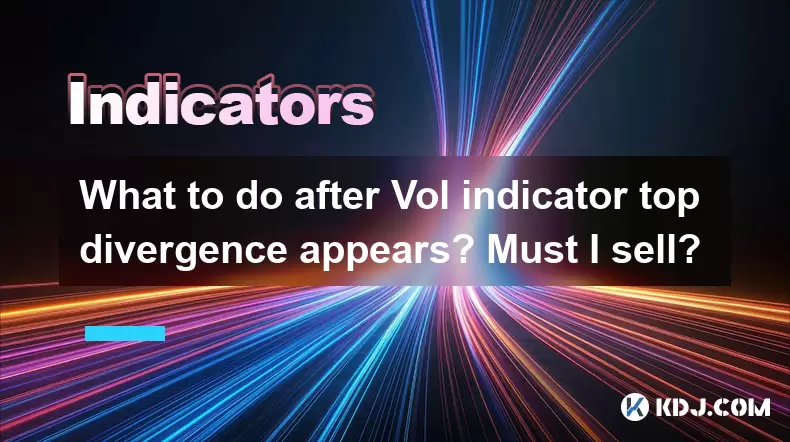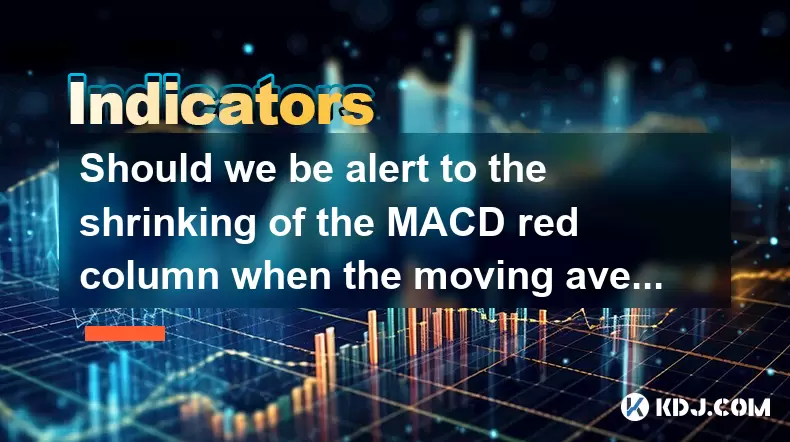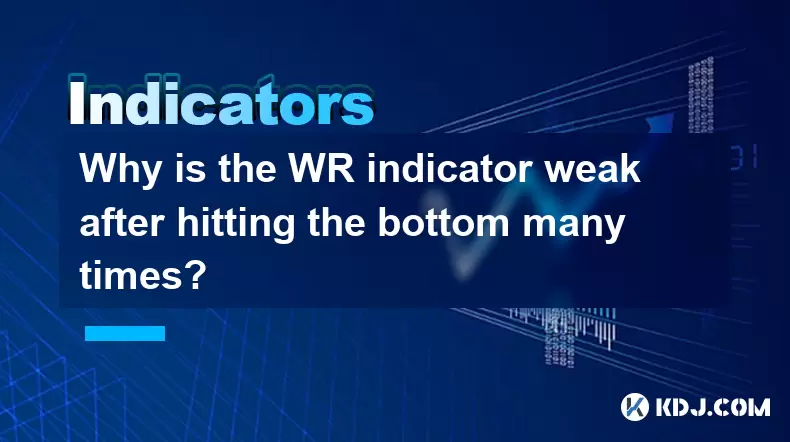-
 Bitcoin
Bitcoin $101,898.5005
-0.75% -
 Ethereum
Ethereum $2,258.1125
-1.07% -
 Tether USDt
Tether USDt $1.0004
0.01% -
 XRP
XRP $2.0178
-2.93% -
 BNB
BNB $624.0243
-1.53% -
 Solana
Solana $134.3298
-0.90% -
 USDC
USDC $0.9999
0.01% -
 TRON
TRON $0.2675
-2.05% -
 Dogecoin
Dogecoin $0.1538
-1.96% -
 Cardano
Cardano $0.5482
-1.11% -
 Hyperliquid
Hyperliquid $35.5636
5.45% -
 Bitcoin Cash
Bitcoin Cash $453.4902
-1.66% -
 Sui
Sui $2.5134
-2.97% -
 UNUS SED LEO
UNUS SED LEO $9.1292
1.77% -
 Chainlink
Chainlink $11.8457
-1.60% -
 Stellar
Stellar $0.2312
-2.73% -
 Avalanche
Avalanche $16.9721
0.29% -
 Toncoin
Toncoin $2.7549
-3.82% -
 Shiba Inu
Shiba Inu $0.0...01081
-1.10% -
 Litecoin
Litecoin $80.8250
-0.71% -
 Hedera
Hedera $0.1374
0.21% -
 Monero
Monero $305.4827
-2.36% -
 Ethena USDe
Ethena USDe $1.0006
0.00% -
 Dai
Dai $1.0000
-0.01% -
 Polkadot
Polkadot $3.2085
-3.12% -
 Bitget Token
Bitget Token $4.0845
-3.13% -
 Uniswap
Uniswap $6.3353
-1.63% -
 Pi
Pi $0.5085
-0.70% -
 Pepe
Pepe $0.0...08913
-3.82% -
 Aave
Aave $232.7090
-0.58%
What to do after Vol indicator top divergence appears? Must I sell?
Top divergence on the Volume indicator in crypto trading signals waning momentum; consider market trends and risk tolerance before deciding to sell.
May 23, 2025 at 09:28 am

When you notice a top divergence on the Volume (Vol) indicator in the context of cryptocurrency trading, it can be a significant signal that the current trend might be losing momentum. Understanding what to do next and whether you must sell immediately is crucial for making informed trading decisions. In this article, we will explore the implications of a top divergence on the Volume indicator and provide detailed guidance on the steps you can take following this occurrence.
Understanding Top Divergence on the Volume Indicator
Top divergence occurs when the price of a cryptocurrency reaches a new high while the volume fails to reach a new high, or even decreases. This discrepancy between price and volume can signal that the upward momentum is waning, and a potential reversal or pullback might be imminent. It is important to recognize that top divergence does not guarantee a price drop, but it does suggest that the current upward trend may not be sustainable.
Analyzing the Context of the Divergence
Before making any trading decisions, it is crucial to analyze the broader context in which the top divergence appears. Consider the following factors:
- Market Trends: Is the overall market bullish or bearish? A top divergence in a strong bull market might not have the same impact as one in a volatile or bearish market.
- Other Indicators: Are other technical indicators, such as the Relative Strength Index (RSI) or Moving Averages, also showing signs of weakness or divergence?
- News and Events: Are there any significant news or events that could affect the cryptocurrency's price? For example, regulatory announcements or major partnerships can influence market sentiment.
Should You Sell Immediately?
The decision to sell immediately after observing a top divergence depends on various factors, including your risk tolerance, trading strategy, and the specific circumstances of the cryptocurrency in question. Here are some considerations:
- Risk Tolerance: If you have a low risk tolerance, you might decide to sell a portion of your holdings to lock in profits and reduce exposure to potential downside risk.
- Trading Strategy: If your strategy involves taking profits at certain levels or following strict risk management rules, you might choose to sell based on the divergence signal.
- Confirmation Signals: Waiting for additional confirmation signals, such as a bearish candlestick pattern or a break below a key support level, can provide more confidence in the decision to sell.
Steps to Take After Observing Top Divergence
If you decide not to sell immediately, there are several steps you can take to monitor the situation and potentially adjust your trading strategy:
Set Stop-Loss Orders: To manage risk, set stop-loss orders at strategic levels. This can help limit potential losses if the price does indeed reverse.
- Identify a suitable stop-loss level: Look at key support levels or a percentage below the current price.
- Place the stop-loss order: Use your trading platform to set the stop-loss order at the chosen level.
- Monitor and adjust: Keep an eye on the price action and adjust the stop-loss level if necessary.
Monitor Price Action: Continuously monitor the price action to see if the top divergence leads to a reversal or if the price continues to rise despite the divergence.
- Watch for breakouts: If the price breaks above recent highs with increased volume, it might indicate that the bullish trend is still intact.
- Observe candlestick patterns: Look for bearish patterns like shooting stars or bearish engulfing patterns that could confirm a potential reversal.
Adjust Your Position: Based on your ongoing analysis, you might decide to:
- Reduce your position size: Sell a portion of your holdings to lock in some profits while leaving the rest to potentially benefit from any further upside.
- Hold your position: If other indicators and market conditions suggest that the bullish trend might continue, you might choose to hold your position.
- Increase your position: If you believe the divergence is a false signal and the bullish trend will persist, you might consider increasing your position.
Use Additional Technical Analysis Tools: Utilize other technical analysis tools to gain a more comprehensive view of the market.
- Fibonacci retracement levels: Identify potential support and resistance levels.
- Trend lines: Draw trend lines to see if the price is respecting key levels.
- Moving averages: Use moving averages to gauge the strength of the trend and potential reversal points.
Managing Emotions and Staying Disciplined
Trading based on technical indicators like the Volume indicator requires discipline and the ability to manage emotions. Here are some tips to help you stay focused and make rational decisions:
- Stick to Your Trading Plan: Have a well-defined trading plan that outlines your entry and exit points, risk management strategies, and criteria for making decisions.
- Avoid Emotional Decisions: Do not let fear or greed drive your trading decisions. Stick to your analysis and trading plan.
- Take Breaks: If you find yourself getting too emotionally involved, take a break from trading to clear your mind and regain perspective.
Frequently Asked Questions
Q: Can a top divergence on the Volume indicator be a false signal?
A: Yes, a top divergence can sometimes be a false signal. It is important to look for confirmation from other indicators and price action before making trading decisions based solely on the Volume indicator.
Q: How long should I wait for confirmation after observing a top divergence?
A: The time frame for waiting for confirmation can vary depending on your trading style and the specific market conditions. Short-term traders might wait for a few hours to a few days, while longer-term traders might wait for several days to weeks.
Q: Is it possible for the price to continue rising after a top divergence?
A: Yes, it is possible for the price to continue rising after a top divergence. If the bullish trend is strong and supported by other factors, the divergence might not lead to an immediate reversal.
Q: Should I always use stop-loss orders when trading based on the Volume indicator?
A: Using stop-loss orders is a good practice for managing risk, but whether to use them depends on your trading strategy and risk tolerance. Always consider your overall risk management plan when deciding on the use of stop-loss orders.
Disclaimer:info@kdj.com
The information provided is not trading advice. kdj.com does not assume any responsibility for any investments made based on the information provided in this article. Cryptocurrencies are highly volatile and it is highly recommended that you invest with caution after thorough research!
If you believe that the content used on this website infringes your copyright, please contact us immediately (info@kdj.com) and we will delete it promptly.
- DOGE Recovery Amid US-Iran Tensions: A Market Rollercoaster
- 2025-06-23 20:45:13
- Fiserv, PayPal, and Stablecoins: A New Era of Interoperability?
- 2025-06-23 20:45:13
- Shytoshi Kusama, SHIB Dev, and Alpha Layer: Decoding the Latest Developments
- 2025-06-23 20:25:12
- BTC, ETH, and Institutional Buying: Smart Money Piling In?
- 2025-06-23 20:25:12
- Sonic Boom or Market Gloom? Navigating Volatility with Sonic, SPX6900, and Crypto
- 2025-06-23 20:55:12
- Shakespeare Coin for Sale: Rare Find or Fool's Gold?
- 2025-06-23 20:55:12
Related knowledge

What is the significance of the gap formed by the gap opening not being filled within five days?
Jun 23,2025 at 09:42pm
Understanding Gaps in Cryptocurrency TradingIn the world of cryptocurrency trading, a gap refers to a situation where the price of an asset jumps from one level to another without any trading activity occurring between those two levels. This often happens over weekends or holidays when the market is closed, and significant news or events occur that impa...

Does the second golden cross of MACD above the zero axis represent the continuation of strength?
Jun 23,2025 at 08:21pm
Understanding the MACD IndicatorThe Moving Average Convergence Divergence (MACD) is a widely used technical analysis tool in cryptocurrency trading. It consists of three main components: the MACD line, the signal line, and the histogram. The MACD line is calculated by subtracting the 26-period Exponential Moving Average (EMA) from the 12-period EMA. The...

Is it effective when the DIF line suddenly crosses the zero axis when the volume is shrinking and the market is trading sideways?
Jun 23,2025 at 07:29pm
Understanding the DIF Line in Technical AnalysisThe DIF line, or the Difference Line, is a critical component of the MACD (Moving Average Convergence Divergence) indicator, widely used in technical analysis across cryptocurrency and traditional financial markets. It represents the difference between the 12-period EMA (Exponential Moving Average) and the...

Should we be alert to the shrinking of the MACD red column when the moving average is arranged in a bullish pattern?
Jun 23,2025 at 08:14pm
Understanding the MACD Red Column and Its SignificanceThe Moving Average Convergence Divergence (MACD) is a widely used technical indicator in cryptocurrency trading. It consists of three main components: the MACD line, the signal line, and the MACD histogram (the red column). The red column represents the difference between the MACD line and the signal...

Why is the WR indicator weak after hitting the bottom many times?
Jun 23,2025 at 07:56pm
Understanding the WR Indicator in Cryptocurrency TradingThe Williams %R (WR) indicator is a momentum oscillator used by traders to identify overbought and oversold levels in the market. It ranges from 0 to -100, with readings above -20 considered overbought and below -80 considered oversold. In the context of cryptocurrency trading, where volatility is ...

Is the shrinking cross star after the historical high a signal of topping?
Jun 23,2025 at 05:56pm
Understanding the Shrinking Cross Star PatternIn technical analysis, candlestick patterns are essential tools for traders to predict potential price movements. One such pattern is the shrinking cross star, which appears as a small-bodied candle with long upper and lower shadows, indicating indecision in the market. When this pattern forms after an asset...

What is the significance of the gap formed by the gap opening not being filled within five days?
Jun 23,2025 at 09:42pm
Understanding Gaps in Cryptocurrency TradingIn the world of cryptocurrency trading, a gap refers to a situation where the price of an asset jumps from one level to another without any trading activity occurring between those two levels. This often happens over weekends or holidays when the market is closed, and significant news or events occur that impa...

Does the second golden cross of MACD above the zero axis represent the continuation of strength?
Jun 23,2025 at 08:21pm
Understanding the MACD IndicatorThe Moving Average Convergence Divergence (MACD) is a widely used technical analysis tool in cryptocurrency trading. It consists of three main components: the MACD line, the signal line, and the histogram. The MACD line is calculated by subtracting the 26-period Exponential Moving Average (EMA) from the 12-period EMA. The...

Is it effective when the DIF line suddenly crosses the zero axis when the volume is shrinking and the market is trading sideways?
Jun 23,2025 at 07:29pm
Understanding the DIF Line in Technical AnalysisThe DIF line, or the Difference Line, is a critical component of the MACD (Moving Average Convergence Divergence) indicator, widely used in technical analysis across cryptocurrency and traditional financial markets. It represents the difference between the 12-period EMA (Exponential Moving Average) and the...

Should we be alert to the shrinking of the MACD red column when the moving average is arranged in a bullish pattern?
Jun 23,2025 at 08:14pm
Understanding the MACD Red Column and Its SignificanceThe Moving Average Convergence Divergence (MACD) is a widely used technical indicator in cryptocurrency trading. It consists of three main components: the MACD line, the signal line, and the MACD histogram (the red column). The red column represents the difference between the MACD line and the signal...

Why is the WR indicator weak after hitting the bottom many times?
Jun 23,2025 at 07:56pm
Understanding the WR Indicator in Cryptocurrency TradingThe Williams %R (WR) indicator is a momentum oscillator used by traders to identify overbought and oversold levels in the market. It ranges from 0 to -100, with readings above -20 considered overbought and below -80 considered oversold. In the context of cryptocurrency trading, where volatility is ...

Is the shrinking cross star after the historical high a signal of topping?
Jun 23,2025 at 05:56pm
Understanding the Shrinking Cross Star PatternIn technical analysis, candlestick patterns are essential tools for traders to predict potential price movements. One such pattern is the shrinking cross star, which appears as a small-bodied candle with long upper and lower shadows, indicating indecision in the market. When this pattern forms after an asset...
See all articles
























































































